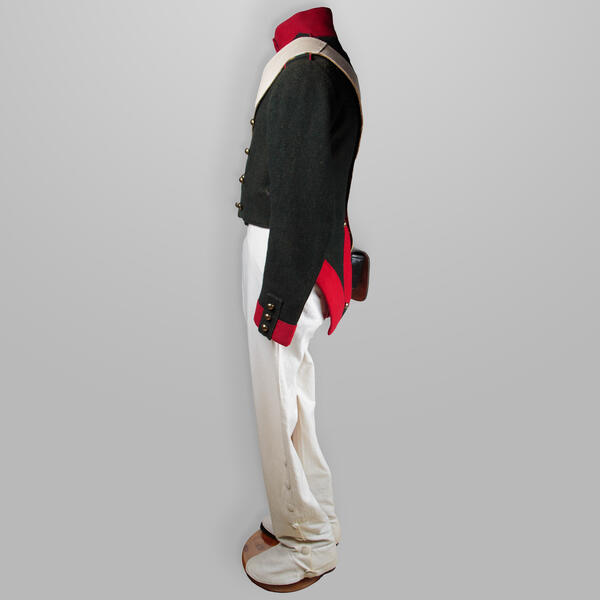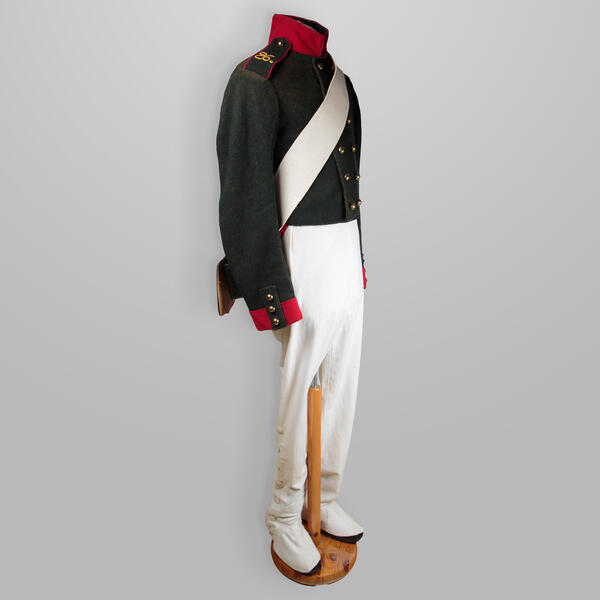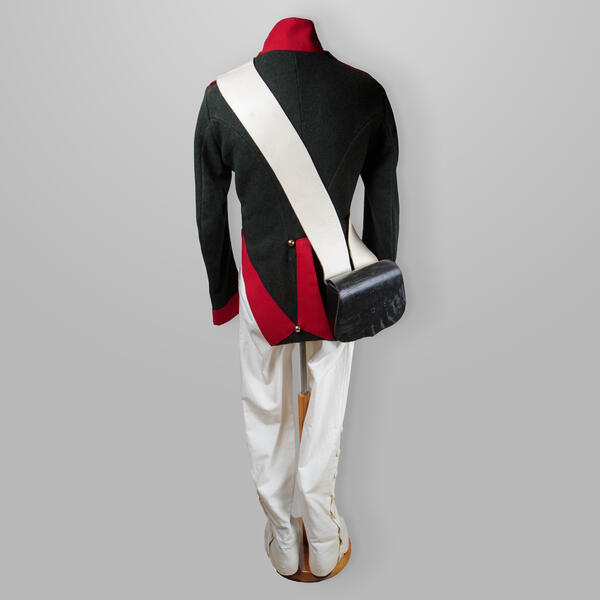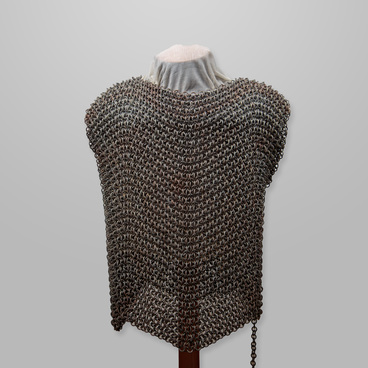The uniform of a ranker from the museum’s collection belonged to a member of the Oryol Infantry Regiment. The unit was founded during the reign of Peter the Great, in 1711. The regiment was renamed several times, but in the early 19th century its original name was returned and it became known as the “Oryol” (“Orlovsky”) Infantry Regiment. Initially, it consisted only of Oryol residents.
In 1811, Ivan Fyodorovich Paskevich reorganized the regiment. His name was later attached to the name of the unit: in 1835, it was known as the Jaeger Regiment of General-Field Marshal Prince of Warsaw Count Paskevich-Erevansky; in 1856, immediately after the death of the founder, it became the Infantry Regiment of General-Field Marshal Prince of Warsaw Count Paskevich-Erevansky; finally, in 1864 it was named the 36th Oryol Infantry Regiment of General-Field Marshal Prince of Warsaw Count Paskevich-Erevansky.
The regiment’s soldiers and officers distinguished themselves almost immediately after it was formed. In the Patriotic War of 1812, the Oryol Infantry Regiment covered the retreat of the Russian army under the command of Prince Pyotr Ivanovich Bagration, after which it engaged in battle with Napoleon Bonaparte’s troops near Saltanovka on July 23.
The Russian military archivist of the early 20th century and researcher of the Patriotic War of 1812 Nikolay Petrovich Polikarpov noted, “General Prince Bagration awarded the following number of Insignia of the Military Order: to the Kyiv Dragoon Regiment — 12, the Akhtyrsky Hussar Regiment — 2; the Aleksopolsky, Ladoga, Nizhny Novgorod, Oryol Infantry, as well as the 6th and 42nd Jaeger regiments — 40 each.” In the Battle of Smolensk on August 16, 1812, the Oryol Regiment led by Ivan Fyodorovich Paskevich put the enemy, commanded by Marshal Ney, to rout.
During the Battle of Borodino, the Oryol Regiment fought as part of the 26th Division. They assisted General Aleksey Petrovich Yermolov in his attack to recapture the Rayevsky redoubt. By the end of the battle, only 75 officers of the regiment remained in the ranks.
The regiment took part in the battles of Maloyaroslavets, Vyazma, and Krasny, as well as in the Russian Army’s Foreign Campaign (1813–1814), the Hungarian Campaign (1848–1849), the Crimean War (1853–1856), the Polish Campaign of 1863–1864, and the Russo-Turkish War (1877–1878).
The museum presents an exact
replica of the uniform created in 2005.





